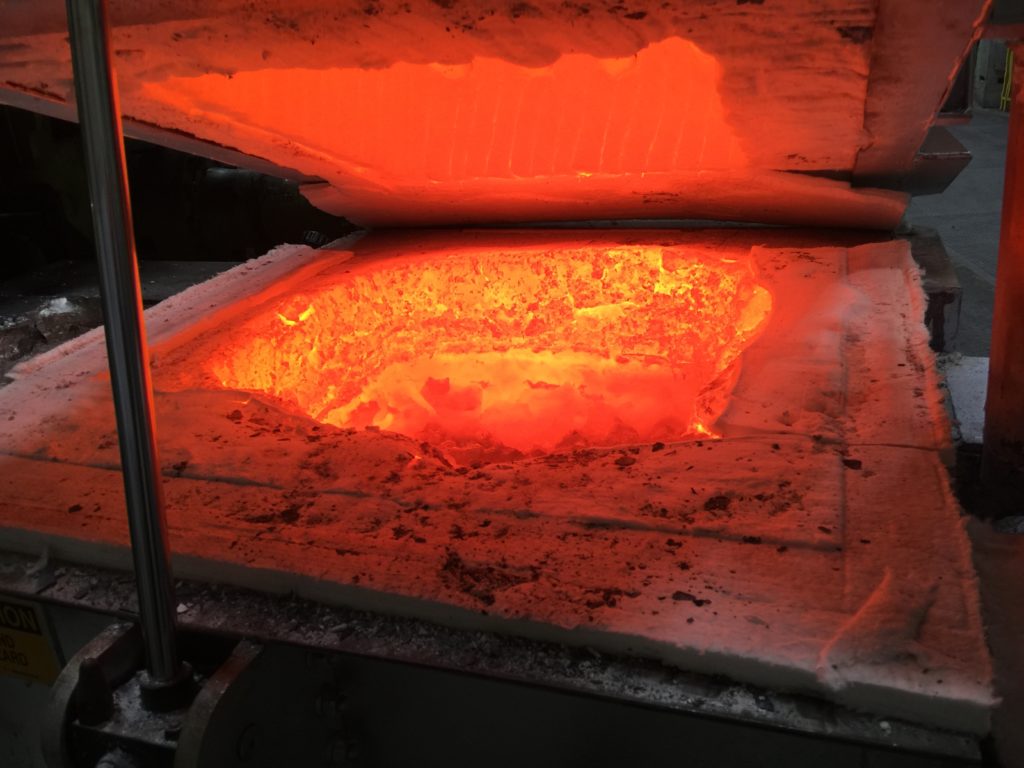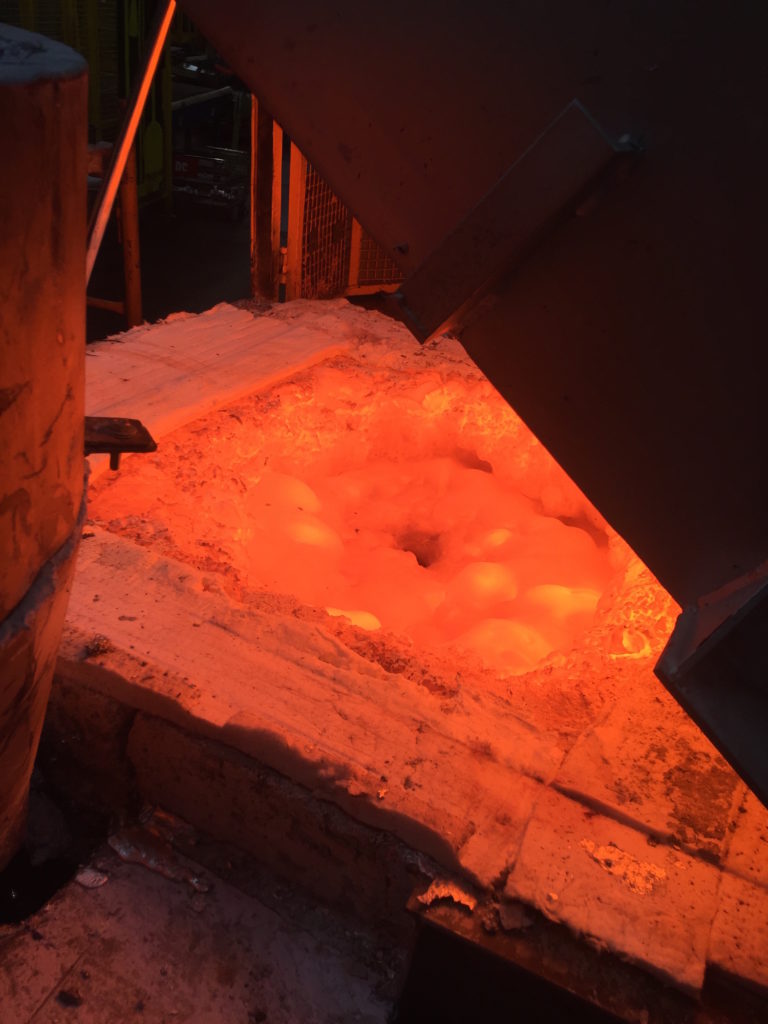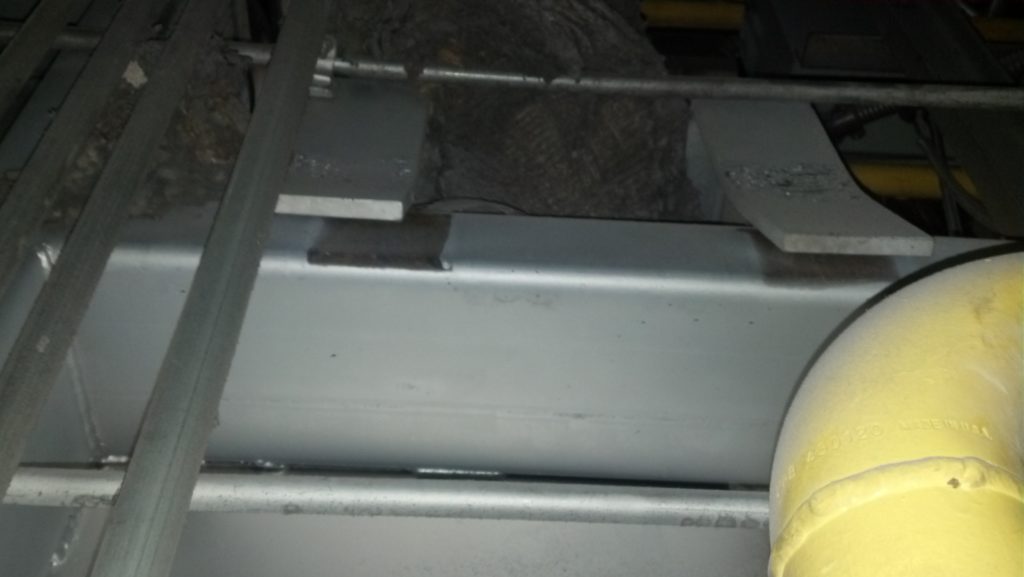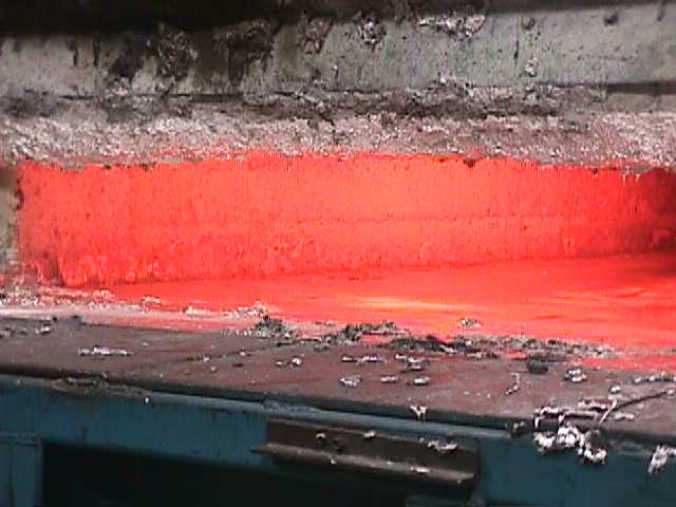The Hidden Cost of Corundum Growth in Aluminum Furnaces
If you have an aluminum furnace, you’re familiar with corundum. When molten aluminum oxidizes with oxygen in the atmosphere, corundum forms. And it’s dangerous, whether it’s forming in a melt furnace or in a holding furnace:
- When corundum forms inside of the furnace refractory, it expands and destroys the refractory lining and eventually the joints of the furnace.
- When corundum forms outside of the furnace refractory, it decreases the capacity of the furnace and can lead to a complete stoppage.
Many of you already know that daily hot cleaning is important and do an excellent job maintaining your furnaces.
But not everyone in the aluminum or die casting industry does this well; many of the repairs we’re asked to complete could have been prevented.
Here are some examples of corundum growth:



The last photo shows buildup from a 2-week period. If this isn’t removed, it will seal itself off and cause downtime for repairs.
Hot cleaning should be performed every day to remove any oxidation that might be adhering to the wall. For heavy production, it may require cleaning up to three times per shift (depending on the charge frequency).
The Hidden Cost of Corundum Growth
Everyone is familiar with the costs associated with downtime. Daily hot cleaning can go a long way to preventing equipment failure, preventing the need for these types of stop-gap repairs:




There are additional ways the corundum reduces your bottom line that may not be as visible:
Capacity Loss
Fast corundum growth causes reduced capacity.
Element Damage
Corundum buildup causes heating elements to work harder and longer, shortening their lifespan and increasing heating costs.
Hood Damage
When the heating elements work harder, you end up overheating the hood and shortening its lifespan.
Refractory Deterioration
Corundum buildup can compromise your refractory.
Aluminum Deterioration
Corundum buildup contaminates the metal. This increases rejection rate and reduces sales.
Hot Cleaning Challenges
Most of the bigger companies we work with have standard hot cleaning procedures and policies, so it’s rare for us to see this type of growth there. Big companies are so cost conscious, they understand the value of performing these daily cleanings.
Smaller operators don’t always have the staff or enforce their rules to remove the corundum as frequently as it should be.
Let’s state the obvious: Hot cleaning is not fun work.
But if you’re not doing it, you’re essentially “poisoning” your line. We highly recommend adhering to a regular hot cleaning schedule for every aluminum furnace.
If you’re short on staff, we may be able to supply a single man or small team to handle it for you. The cost is a drop in the bucket compared to what you’ll save.
Quarterly Cleaning Procedure for an Aluminum Furnace
Each quarter, we recommend a comprehensive cleaning. While we provide this service for clients, we thought we’d share it with you in case you’d like to complete it yourself.
Material
- Rossborough #NS-411 Aluminum Flux (or customer’s equivalent).
- Foseco #601 Degasser (or customer’s equivalent).
Tools
- Skimmer
- Scraping tool
- Forked paddle
- Degassing hook
Safety Precautions
- Tools must be dry and hot before their introduction into the furnace.
- Operator should wear insulated gloves and face shield.
Turning Furnace to Low Flame
- Turn control LOW/AUTO selector switch to LOW.
- Wait 30 seconds for the gas regulating valve to go to the closed position (For low fire.)
- Furnace combustion is now on low flame, and the operator can proceed with cleaning.
Fluxing the Dip and Melt Wells
Frequency:
- Melt Well – Once per shift
- Dip Well – Beginning of each shift.
Procedure:
- Spread fluxing compound liberally over bath surface.
- Stir flux into the bath with a forked paddle.
- Unwrap the degasser tablet from the aluminum foil packing.
- Move the degassing hook around in the bath to insure complete coverage.
- Once the degasser tablet has been exhausted, which is obvious from the lack of reaction in the bath, the hook is withdrawn.
- The flux, which remains on the bath, is then lightly chopped into the bath.
- Allow to set for 10 minutes.
- Remove dross into a container with skimmer.
Fluxing and Degassing the Furnace Chamber
Frequency:
- Monday – Wednesday – Friday at a minimum.
Procedure:
- Same as for dip and melt wells, except after having applied the flux, scrape the walls and floor. Be sure to scrape the sidewalls at least 4” below the surface of the bath.
Turning the Furnace to High Flame After Cleaning
- Turn LOW/AUTO selector switch back to AUTO.
- Furnace is now operative.
We highly recommend that no deviations from these instructions be permitted without written re-issuing of these instructions by the person responsible for planning.

If you want your furnace to look like this picture, use proper procedures and clean your furnace on a regular basis.
If you’d like for us to review your furnace and create a custom maintenance schedule for your team, contact us to schedule!
Comments are closed.

